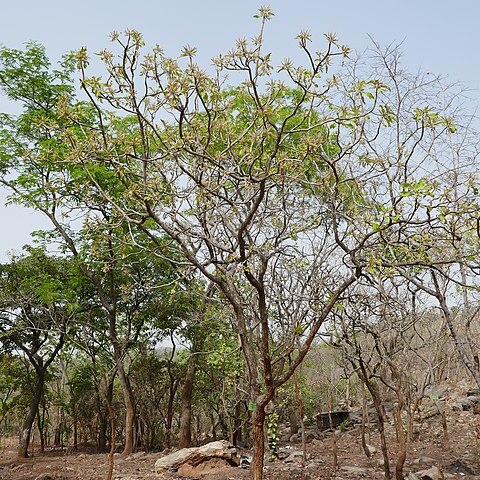Leaves spirally arranged, petiolate; lamina 16–37 x 7–19 cm., subcoriaceous, elliptic to obovate-oblong, densely brownish-tomentose (when dried), apex obtuse to rounded or sometimes acute, base obtuse to rounded or occasionally subcordate; lateral nerves 7–18 pairs, prominent beneath; petiole 3·5–5 cm. long, stout.
Deciduous tree 5–13(20) m. high; crown rounded to flat-rounded; bark blackish-grey, deeply fissured; branchlets densely tomentose with grey-brown to dark-grey-brown bark becoming softly and thickly corky with age.
Cotyledons 2, 10–16 x 20–25 mm., transversely elliptic to subreniform with petioles 2–2·5 cm. long arising below soil level.
Lower receptacle densely tomentose; upper receptacle sparsely tomentose, ± glabrous towards the apex.
Fruit pale-yellowish-green, 6·5–12 x 2·5–5·5 cm., densely velutinous, stipe 5–7 cm. long.
Inflorescences of axillary spikes 8–17 cm. long; peduncle 1–2 cm. long.
Flowers cream or greenish-white or pinkish, strong-smelling.


